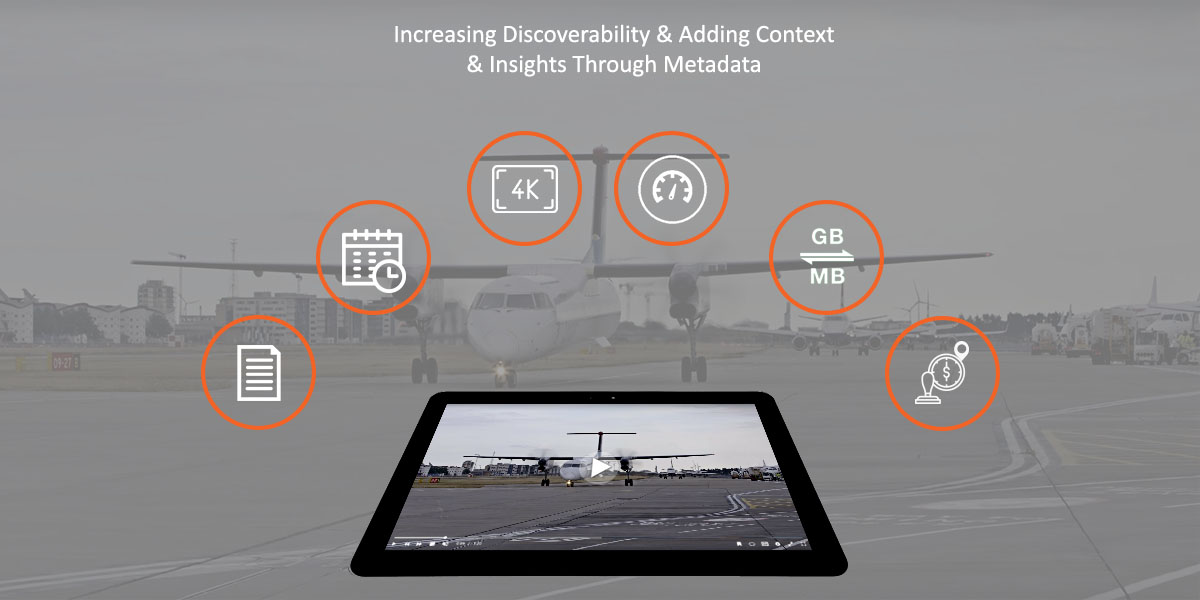Metadata, which is data about data, for it to be optimized for videos for searching, recording, and managing, it is generated in either descriptive or structural form. Descriptive metadata provides information about the intellectual content of a video, and it changes with each video file, whereas structural metadata shows how different video files are related to each other, and it applies to multiple files. In a video, metadata is mostly used to describe information related to the video asset. This can be user-generated, such as tags and video descriptions, or generated by the system from within videos such as video size, width, and height and data against timeline such as transcription and geolocation.
Metadata generated by VIDIZMO are optimized for searching, recording, and managing. VIDIZMO provides its users with over 600 such system created and limitless user-generated descriptive and structural metadata. These are the following ways VIDIZMO generates metadata:
- System Generated
- Extracted from data in video
- Derived from data against a timeline
- User Generated
- Text
- Date
- Drop Down
VIDIZMO’s Powerful System Generated Metadata
Metadata Extracted From Within a Video File
Metadata generated within a video file is used to describe video data that comes from cameras, video recorders, and video editing programs. There are specific data which is present in a video when the original file is uploaded, such as the size of a video file, height and width, Bitrate, Frame rate, and much more. VIDIZMO extracts all of these insights as metadata, which is present in a video. Metadata such as these provide the user with insights such as the quality of a video, size, bandwidth required to view that video, and more.
In the surveillance industry, CCTV security camera video recording is usually done at 30 fps. However, there are surveillance providers who provide videos recorded at lower fps, the choppiness of a video is noticeable to the human eye if the fps (frames per second) of a video is lower than 15 fps. Another disadvantage of lower fps is when an operator digitally plays back the video surveillance footage on any platform they can capture and pause only a few specific frame rate in time with a lower frame rate. VIDIZMO generates metadata such as frame rate and so the operator before even viewing the video file would know details about the choppiness of a video and how much analysis he/she can perform on it.
Metadata Extracted Against The Timeline
Similarly, there are data present in a video file that is against the timeline of a video. These data present in a video file change according to the timeline. Examples of these data include information such as the time when a video is taken, the location where the video is shot, and more. VIDIZMO can extract all of these insights as metadata against the timeline.
For instance, in the insurance industry, drones are being used to investigate property claims in inaccessible locations, thereby speeding up the inspections while reducing the risk to claims adjusters. VIDIZMO’s system-generated metadata would generate data such as GPS Speed, GPS Horizontal Positioning, and much more. Metadata such as these can be a quick way to add context and valuable information. For example, the adjuster just by looking at the metadata such as GPS timestamp would know the precise time when the drone video was captured, see the location where the footage was taken by the drone from seeing metadata such as Latitude ref and Longitude ref.
VIDIZMO’s Limitless User-Generated Metadata
User-generated metadata in VIDIZMO are done by selecting either of the three supported “Type” actions, each with various options associated with them. Capabilities include being able to include open-ended Type actions: Text, and option-related: Drop Down actions. This method aids in keeping metadata information up-to-date. This process is also helpful in speeding up and simplifying future digital asset maintenance but is also useful in searching video assets, especially when training workers using specific videos.
A good example would be in the aviation industry, where engineers are trained by video to design wire harness and wired box assemblies. There are thousands of part numbers and three different types of parts to choose from when designing a wire harness, so by using VIDIZMO’s user-defined attributes, this allows uploaders to define which different components and types the video is training the viewer on. The feature would then generate metadata with every video uploaded, which can be easily searched in VIDIZMO’s platform.
The viewer can search for the type of part or part number he/she wants to view the video about in VIDIZMO’s search bar. However, in the case, the viewer is unaware of the type of part, and part number, VIDIZMO’s powerful faceted search can even be used here. Using VIDIZMO’s filters for part type and names, the viewer can search for specific and precise videos that are related to the subject he/she wants to be trained on.
Conclusion
Metadata is an essential element of a video library, adding much-needed context to increase discoverability, while also offering a powerful way to manage assets with greater control. Through VIDIZMO, metadata management is simplified, providing flexibility to keep the information up to date and to manage mass updates intelligently to a series of content.
To know more about VIDIZMO’s metadata generation, contact us today or visit our website for details.
Posted by VIDIZMO Team
We at VIDIZMO are experts in secure and compliant video streaming and digital evidence management. Our aim is to help educate such that you can better utilize your video data.


